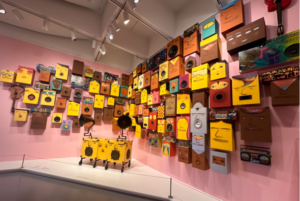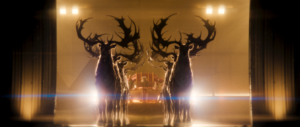On the Nature of Art

Image Courtesy of SmartHistory
By Javier Mazariegos
Aesthetics are a wonderful realm for human study. Art is a perfect place for such a discussion. Oscar Wilde himself knew this, and used the preface to Picture of Dorian Gray to make a bold claim about art: all art is useless. I think it is not useless. Art is very important because it is the most proper way in which we encounter beauty. I want to argue that art cannot be useless, but rather that art is necessary for living a human life.
Firstly, I think it is appropriate to define “useful” in this context. Unfortunately, the term has come to mean “good for the sake of something else” as opposed to “good in itself.” But this distinction is confusing, because the good understood in a classical sense always gestures towards a perfection, towards an end. Art is not useful in the sense that it can make you more money or give you more pleasure like another technology might be able to. Properly speaking, technology is the term that refers to that which increases accessibility to a desired human good. Technology is a tool. Art is not useful in that way. Hopefully, when we experience art, the reason for experiencing it is summed up in the art itself.
Art helps us flourish, so it can be considered “useful for flourishing.” It is the same way in which we talk about liberal arts as useful for the sake of human flourishing. Thus, it is not useless but serves a greater purpose of putting the viewer in contact with beauty, which elicits wonder and invites contemplation. I think art puts the viewer into such contact through a neat process.
Art does two things to a viewer. Broadly speaking, anyone who experiences art will be called a viewer for simplicity’s sake. It gives an initial impression of something and then corrects it. Billy Collins, known as America’s favorite poet, famously said that poetry has two moments: the place it starts and the place that it ends.
The place it starts is something familiar and attractive; it is the initial thing that grabs our attention. It could be the medium of paint, the sound of music, the metaphor in a novel. Art always begins with an open hand to the person. It says, “take and read.” This can be considered an invitation to contemplate. A traditional word for it is wonder. So, curiously, not only does all philosophy begin in wonder, but so does all art. Thomas Aquinas said what the poet and philosopher have in common that they both deal with the marvelous.
To recap, step one of art is an attractive tug to our human senses. It moves our heart and mind through the medium of the senses to pause and consider. Because it meets us at our senses, and appeals to human simplicity, I like to say that all good art is decently accessible to everyone. If done well, art will attract a faculty of wonder which we all share.
The second step of art is to take us beyond the familiar to consider something deeply about human existence that the artist thought important to share. This could be the implication of painting, the timbre of a song, or a meaning of a poem. The second step is always a correction of an initial impression, the presentation of a new connection of seemingly unrelated things, a new angle to consider something about life.
In other words, art on the one hand invites us to stand in wonder and with the other hand, shapes the moral imagination of the viewer with the idea it seeks to communicate. All art communicates an idea. Thus, art will invite one to consider things with new eyes: if the content of that consideration is conducive to living a meaningful human life, then this content will be beautiful.
Beauty is the transcendent gesture that points to perfection of our appetites and senses. In this sense, art has the duty to make sure the second step of its operation gives a helpful consideration about the world, namely a beautiful consideration of the world.
Thus, all art is ethical. However, the ethical claims it makes differ greatly. If we can consider some ethical considerations worse than others, we can consider some art as unhelpful in coming to understand what it means to be a human person.
I have often considered that this role of art is not unlike that which a good friend plays. A good friend does two things. One, they listen lovingly. They meet us where we are at. When we open our souls, they jump in with us. They empathize. When done well, art empathizes. Strictly speaking, it calls out to that pathos specifically and invites it to contemplate.
A second thing friends do is help us out. A teddy bear is not a good friend; for while it can give us comfort, but it cannot really help us make prudential decisions. Friends do. Friends help one another navigate life. They persuade us to things that are hopefully worth being persuading about. A friend who holds back counsel from his friend is a lousy friend. This counsel must be good. If a friend encouraged us to get back together with a toxic ex, knowing full well that it would end up poorly for us, we would consider that uncharitable. Art also should invite us to contemplate in a way that will make us happier for having seen it.
I would like to conclude with a poem by Henry Wadsworth Longfellow that I hope captures a bit of what I hoped to communicate:
I shot an arrow into the air,
It fell to earth, I knew not where;
For, so swiftly it flew, the sight
Could not follow it in its flight.
I breathed a song into the air,
It fell to earth, I knew not where;
For who has sight so keen and strong,
That it can follow the flight of song?
Long, long afterward, in an oak
I found the arrow, still unbroke;
And the song, from beginning to end,
I found again in the heart of a friend.







